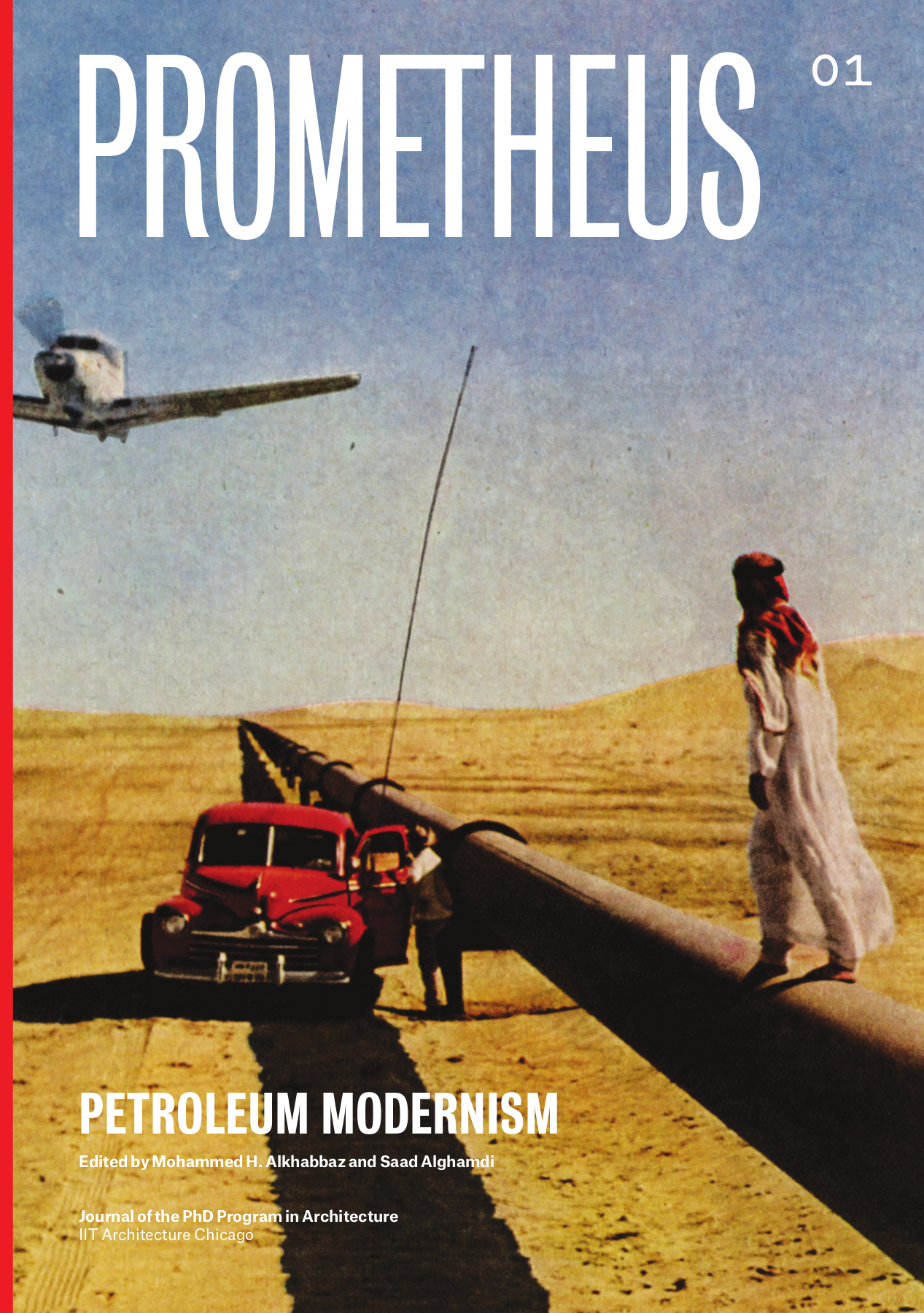Editors’ Introduction
Abstract
As with the first Industrial Revolution’s multifaceted influence on our history, the reverberations of the second Industrial Revolution (also known as the Technological Revolution) at the turn of the century can still be felt today. One of the distinguishing elements between the two revolutions is the exploration of, and dependence on, petroleum as an energy source. Petroleum and its by-products became synonymous with modernity (modern society). Perhaps, like no other place, the intense and forceful development conveyed by the word “revolution” could be better seen as it was in the case of the development following the discovery of petroleum in the Persian Gulf.
Examining this petroleum-led development in the Gulf region shows how architectural and urban development in relation to petroleum was linked only in terms of the capital it generated (for the most part). In the College of Architecture PhD Program at IIT, a group of students came together to examine the topic of petroleum and modernism a bit further than just the monetary effect of the petroleum industry. It was a challenge to take on such a topic, given the difficulty of reaching back to the region and navigating through the bureaucracy and periodic changes at a geopolitical level. However, we thought we could follow in the steps of the Greek Titan Prometheus. Petroleum is the equivalent to Prometheus’s fire; it is modernity’s essential source of energy. For the inaugural issue of the Prometheus journal, we decided to share with the world how petroleum influences architectural modernism.

